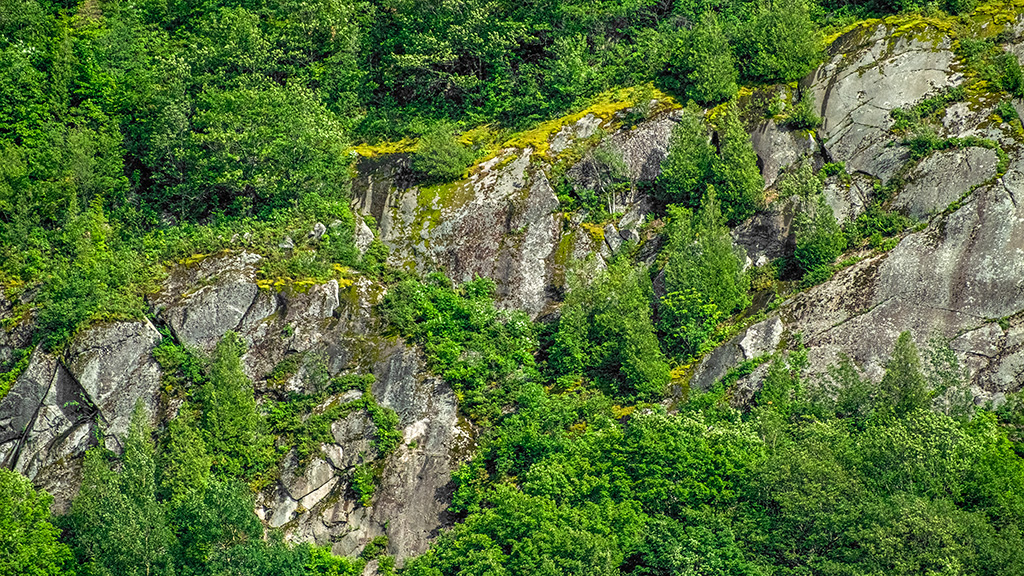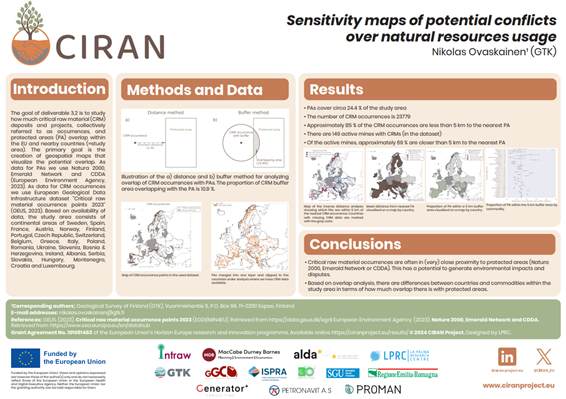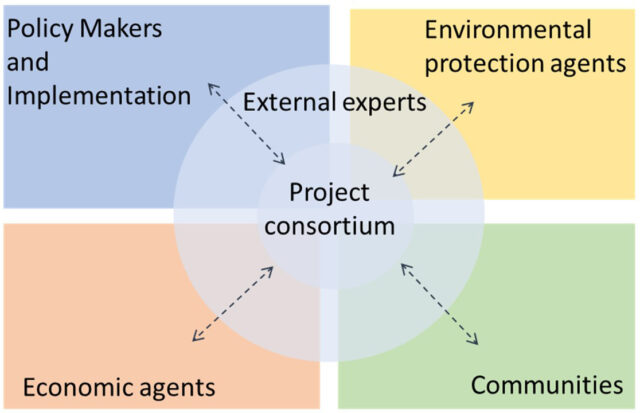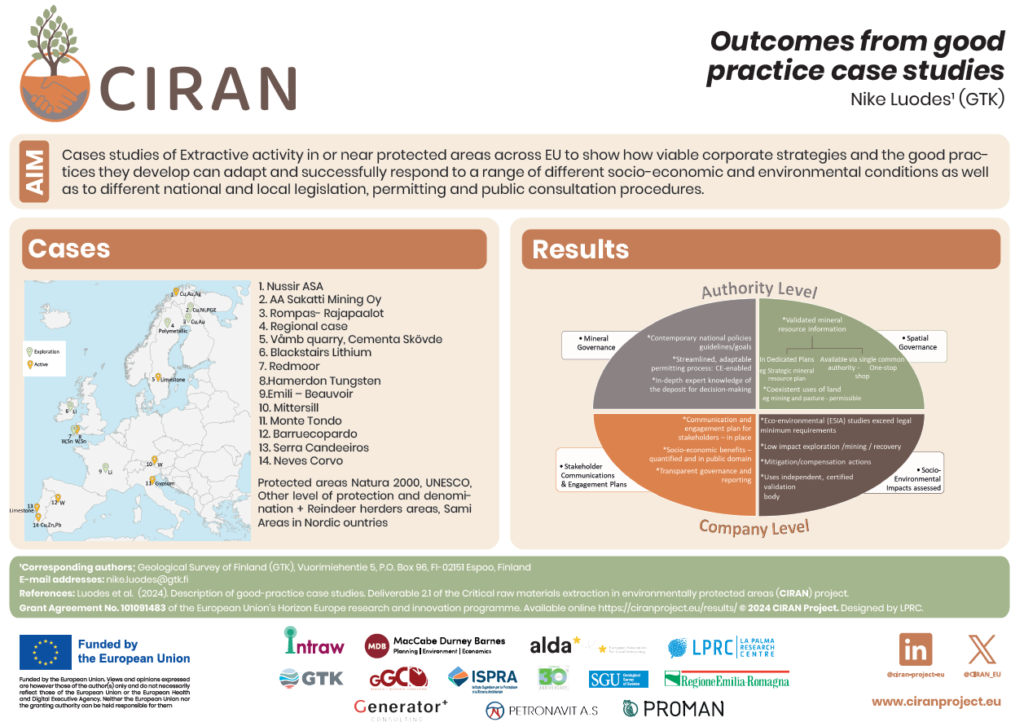Interactions Between Extractive Activities and Natura 2000 Areas – First Outcomes of the CIRAN Project
Recently, the European Union has set a goal to increase both mining and nature conservation in its territory. To meet those apparently opposite goals, a comprehensive spatial view is needed on their distribution and mutual relationships. In many cases, they overlap and may create constraints for extractive activities when this happens. The CIRAN project addresses this challenge by focusing on the exploration and extraction phase and addressing the socio-economic and environmental aspects. By analysing current practices and governance, the project aims to improve future permitting processes and acceptability of such extraction.

However, the first question is, if such extraction is needed in the first place. Consequently, within the project, the first step is to assess how wide is the problem of overlapping between Critical Raw Material (CRM) deposits and protected areas?
Analysis of overlap between Critical Raw Materials and environmental protected areas
Within the CIRAN project, Geological Survey of Finland GTK has been responsible for the evaluation of potential conflicts between mineral deposits and protected areas within a study area spanning EU member states and nearby countries with associated data available.
The research showed that about 85% of the CRM occurrences are less than 5 km from the nearest environmental protected areas when considering data on CRM publicly available from the European Geological Data Infrastructure (EDGI) database. The database presents gaps because it relies on harvesting activities performed in previous projects, and thus it reflects the scope of those projects.
Nevertheless, the CRM occurrence count in the dataset within the study area of CIRAN project is 23 779. The data on protected areas was collected from the European Environmental Agency and is available more thoroughly assembled. See Figure 1 for more information on data and results of the overlap analysis.

Case studies of current good practices of extraction
Results from the study of overlap also show that approximately 69% of active mines, with reported CRMs, are closer than 5 km to the nearest protected areas. In fact, there are several extractive activities operative near them.
Within the CIRAN project, some of these cases that presented adoption of good practices had been selected to understand what enabled coexistence of extraction activity and protected areas. These cases show current best practices adopted both by companies and regulators to handle extraction in such sensitive contexts. The cases are discussed within expert groups and community groups, both gathered by the CIRAN project, to improve guidelines for future projects (Figure 2).

The cases allowed to identify good practices performed by authorities, at governance level, and by companies through case studies. The relevant practices identified in mineral governance level include the presence of national policies, guidelines or goals that are also supported at national, regional, or local level, the existence of adaptable permitting processes that enable circular economy, and the knowledge of the mineral resources. All the cases addressed were inherent to deposits of European and world importance.
From the perspective of spatial governance, the member states had different systems. However, an identified important feature is that mineral and environmental knowledge is handled either through dedicated visible overlapping plans or through a common authority in order to have both aspects visible during the decision process. Some member states allowed co-utilization of land; this is also considered positively as extractive activity could be executed without excluding other land uses.
Good practice related to companies’ strategies included communication and engagement activities with local communities and socio-environmental impact assessment beyond the extent required by regulators or legislation. Within the studied cases, companies that had been operative in protected areas have performed extensive impact assessments and research on the path-receptors, have adopted innovative low impact techniques and worked on improving environmental performance from the technological point of view beyond the legislative requirements. Mitigation and compensation actions have been wide in some cases reaching hundreds of activities within a site.
The use of external experts by mining companies in environmental assessment and monitoring improved liability of the results, increasing transparency and acceptance. The CIRAN project has also produced guidelines for mine closure that will be published later this year.
Communication and stakeholder engagement have been a practice regulated within the extractive activity through internal corporate plans. Mining and exploration companies active near protected areas have invested in engagement and communication at an extent compared to mining companies working in unprotected areas.
The cases show that transparency supported trust towards the company. Extractive activity has also brought quantifiable socio-economic benefits for the communities, through use of local services, revitalizing local economy, supporting local associations and events, engaging in education activities and more. See Figure 3 for an overview of the case studies and identified good practices.

More to come
The findings of this CIRAN project task were presented in the midterm consortium meeting held in Bologna in 2024 that enabled building strong basis for further development.
More information about the meeting at CIRAN 3rd Consortium Meeting, External Experts Workshop & PO review in Bologna (Italy) – CIRAN
If you are interested in following up the project development and participating in the discussions join the LinkedIn discussion forum at Sustainable Management in the Extractive Sector: Navigating Challenges and Forging New Paths | Groups | LinkedIn
CIRAN first results will be published on the project webpages at Results – CIRAN (ciranproject.eu)
Writers
Nike Luodes
Nikolas Ovaskainen
Hannu Panttila
Toni Eerola
Martina Bertelli
